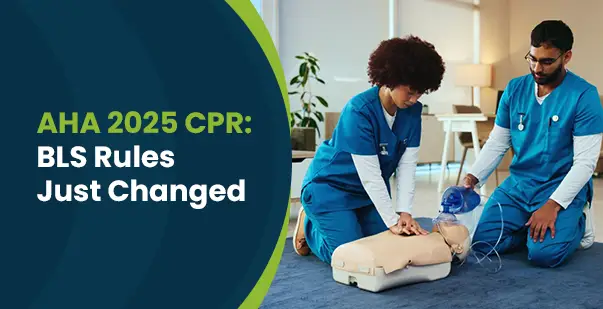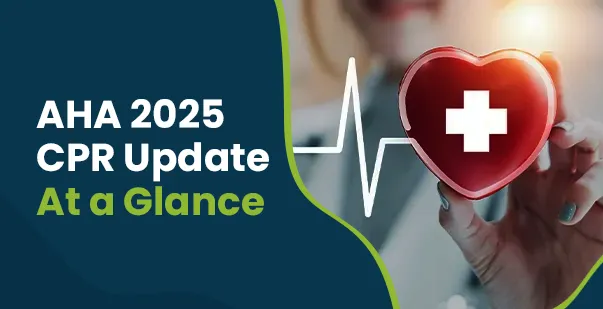Even a relaxed tongue can block the airway, which is common in emergencies like fainting at home or during surgery. In fact, a sleep study found tongue base collapse in 56% of patients with airway obstruction. This is where the oropharyngeal airway, often called an OPA, becomes life-saving before advanced procedures begin.
Many people assume breathing support always means oxygen masks or intubation. But in some cases, especially when a person is unresponsive without a gag reflex, an oropharyngeal tube is the first step. Still, there’s confusion about when to use it, how to measure OPA correctly, and who should insert it. If you have ever wondered what an OPA is and why it’s used before other advanced tools, this guide will help. Let’s break down its purpose, use, sizing, and safety.
What Is an Oropharyngeal Airway?
The oropharyngeal airway (OPA), also known as an oral airway, is a medical device used to keep the upper airway open in people who are unconscious or unresponsive. It comes in a shape like a curved, rigid tube. It works as a tiny plastic mouthguard with a mission to stop the tongue from blocking your breath.
Unlike endotracheal tubes, an OPA does not enter the larynx. It sits above the epiglottis, which makes it less invasive while still protecting airflow. Its main job is to stop the tongue from falling back and blocking the pharynx, the part of the throat behind the mouth. This tongue obstruction is a common cause of breathing difficulty in unconscious patients, especially when the jaw muscles relax.
How Many Types of Oropharyngeal Airways?
A recent study published in the BMC Emergency Medicine shows that approximately 45% of invasive prehospital airway management interventions in emergency responses involved the use of oropharyngeal airway devices or similar supraglottic devices. With different needs across patients, several OPA types have been developed to match the situation, anatomy, and preference of healthcare providers, such are discussed as follows:
| OPA Type | Material | Features | Best Use Case |
| Guedel Airway | Rigid plastic with color-coded bite block | – Curved shape follows tongue contour; – Single-use and disposable; – Quick size identification via color code | Routine resuscitation, anesthesia induction, and general emergency care where fast, reliable airway support is required |
| Berman Airway | Rigid plastic | – Open lateral channels for suction access; – Flat flange stabilizes placement | Patients with excessive secretions, trauma cases, or situations needing repeated suction |
| Flexible Rubber Airway | Soft rubber | – Flexible, – Less traumatic to tissues; more comfortable;- Reduces risk of injury during insertion | Pediatric patients, fragile oral tissues, post-oral surgery cases, or where rigid devices could cause harm |
| Metal Airway | Stainless steel | – Highly durable; – Reusable; | Resource-limited or military settings where reusability and durability are prioritized |
| Dual Channel Airway | Plastic (advanced design) | – Two air channels improve airflow and allow suction without removing the device.- Fewer interruptions in ventilation | Intensive care, trauma centers, or advanced emergencies requiring airway maintenance with frequent suction |
When to Use an Oropharyngeal Airway: Indications
OPAs are used only in specific situations, mostly when a patient is unresponsive and unable to protect their airway. The most common situations when an OPA medical use is indicated are discussed as follows:
- Airway Obstruction from the Tongue
The tongue is the most common anatomical cause of airway blockage in unconscious patients. As consciousness fades, the tone of the jaw and tongue muscles weakens. This allows the base of the tongue to fall backward, which closes off the pharyngeal airway.
An oropharyngeal airway works by physically lifting the tongue away from the posterior pharynx. The rigid structure of the OPA fits over the tongue and maintains the space between the soft palate and the pharyngeal wall. This keeps the upper airway patent (open) and allows passive or assisted ventilation. It is most beneficial in:
- Post-seizure patients who are unresponsive (only after the seizure ends, to prevent misapplication during active seizure phases)
- Patients under sedation for short procedures
- Individuals in a post-cardiac arrest state before intubation
Build strong and certified skills
Get certified in Basic Life Support (BLS) with our flexible online course.
Signs of Tongue-Related Airway Obstruction:
- Loud snoring or gurgling sounds
- Paradoxical chest movements (chest sinks while abdomen rises)
- Little or no air movement from the mouth or nose
- Visible effort to breathe without effective ventilation
- Assisting Bag-Valve-Mask (BVM) Ventilation
Manual ventilation using a bag-valve-mask is a common method for oxygen delivery in emergencies. However, BVM ventilation requires a patent airway to be effective. In patients with reduced consciousness, soft tissue collapse, mainly from the tongue and soft palate, can make ventilation difficult or ineffective. An OPA insertion improves the BVM seal because the device can:
- Prevent posterior tongue displacement
- Unblocks airflow to the trachea
- Supports a better chest rise during bagging
- Keeps the air going into the lungs instead of escaping.
This is particularly useful in cardiac arrest resuscitation, pre-intubation support, and trauma situations where airway positioning alone is not enough.
In a two-person BVM technique, using an OPA makes it easier for the second rescuer to maintain a proper mask seal and reduces the overall effort needed for effective ventilation.
- Deeply Obtunded Patients with Spontaneous Breathing
Some patients do not stay fully unconscious and still have an altered mental status. They may be experiencing deep drowsiness from drugs, brain injury, or metabolic causes. Such patients can lose protective airway reflexes while still breathing on their own. These patients may experience partial airway collapse due to soft tissue relaxation but are not yet candidates for intubation. In these cases, an OPA:
- Maintains a clear path for spontaneous breathing
- Prevents intermittent hypoxia caused by soft tissue collapse
- Buys time while preparing for advanced airway interventions if needed, as part of the rescue breathing stage in the BLS/ALS algorithm.
Common situations include:
- Drug overdoses (opioids, alcohol, sedatives)
- Hypoglycemia-induced coma
- Post-ictal phase of seizures
A careful assessment is needed to ensure the absence of a gag reflex before placing an OPA in such patients.
- Upper Airway Obstruction from Soft Tissue Collapse
Soft tissue obstruction is not limited to the tongue alone. In deeply unconscious patients, the pharyngeal muscles, uvula, and soft palate can collapse into the airway. Secretions may also pool in the back of the throat, worsening the blockage. An OPA helps in these cases by:
- Structurally separating collapsed tissues
- Allowing for better drainage and suction access
- Reducing airway resistance for passive airflow
- Supporting oxygen delivery during non-invasive ventilation
This indication is most relevant in stroke, trauma, or prolonged seizures, where upper airway tone is lost even if breathing is initially preserved.
- Combined Use with Nasopharyngeal Airway (NPA)
In some trauma or resuscitation settings, a single airway adjunct may not be enough. OPAs and NPAs can be used together to optimize ventilation. This dual approach is used when:
- Oral and nasal airways are both partially compromised
- Facial trauma prevents a proper BVM seal with one device
- The patient has a mixed obstruction involving multiple soft tissue areas
OPAs address oral obstruction, but NPAs bypass the tongue entirely and help air reach the pharynx through the nasal cavity. NPAs are usually better tolerated in semi-conscious patients, making them more versatile in mixed airway scenarios where OPAs might not be suitable. Together, they can:
- Improve ventilation efficiency
- Reduce the need for immediate intubation
- Enhance oxygenation in difficult airways
- Anesthesia and Surgical Sedation
During short procedures where general anesthesia is used without endotracheal intubation, OPAs are inserted to maintain the airway until the patient regains reflexes. In dental surgeries, colonoscopy under sedation, and during recovery in post-anesthesia care units (PACUs), the OPA:
- Keeps the airway open until the patient regains muscle tone. This is common during monitored anesthesia care (MAC) or deep sedation in outpatient settings because muscle relaxation during sedation can cause the tongue to fall back and block the airway.
- Supports airway suctioning to remove secretions
- Reduces the chance of hypoxia during light sedation
Use is limited to patients under deep sedation or general anesthesia with a complete loss of gag reflex.
- Post-Seizure Recovery and Positioning
Immediately after a seizure, many patients fall into a brief unresponsive state. During this phase, airway tone is lost, and secretions may pool in the mouth. While aggressive airway insertion during active seizures is dangerous, once the seizure ends and the patient is unresponsive, an OPA can be:
- Inserted to support breathing
- Used in combination with suctioning
- Paired with lateral positioning to prevent aspiration
OPAs can help reduce postictal hypoxia and maintain a temporary airway while awaiting full consciousness.
| Do Use OPAs In (Indications) | Don’t Use OPAs In (Contraindications) |
| Unresponsive patients with tongue-related airway obstruction | Conscious or semi-conscious patients |
| Airway obstruction from soft tissue collapse (tongue, soft palate, uvula) | Patients with intact gag reflex |
| During bag-valve-mask (BVM) ventilation, to improve seal and airflow | Active seizure (risk of biting and oral trauma) |
| Deeply obtunded patients with spontaneous breathing (e.g., overdose, hypoglycemia, post-ictal) | Oral trauma, facial fractures, or active oral bleeding |
| Post-seizure recovery phase (once unresponsive, not during seizure) | Trismus (restricted mouth opening) |
| Post-cardiac arrest or during resuscitation before intubation | Foreign body obstruction (risk of pushing it deeper) |
| Sedation and short anesthesia procedures (with loss of gag reflex) | Loose, broken, or avulsed teeth / recent dental surgery |
| Stroke, trauma, or prolonged unconsciousness with airway collapse | Major facial trauma where oral route is unstable |
| Combined with NPA in mixed or difficult airway cases | — |
Read more: How to Use Endotracheal Tubes: A Complete Insertion Guide
When Not To Use Oropharyngeal Airways (OPAs): Contraindications
Healthcare providers must assess the patient’s level of consciousness, airway patency, and risk factors before insertion after understanding what an OPA is. Below are the key clinical scenarios where OPAs are either unsafe or ineffective.
| Contraindications Conscious or semi-conscious patientsOral trauma or trismusForeign body obstructionLoose/broken teeth or recent dental surgeryActive seizurePresence of gag reflexFacial fractures with an unstable oral route |
Conscious or Semi-Conscious Patients
An OPA must never be used in patients who are awake, alert, or even slightly responsive. If a person can cough, swallow, or respond to pain, they likely still have an intact gag reflex. Forcing an OPA in such cases can trigger violent gagging and vomiting, which significantly increases the risk of aspiration.
Additionally, it can cause laryngospasm, a sudden and forceful closure of the vocal cords that can completely block airflow and quickly worsen the patient’s condition. In these situations, safer alternatives like a nasopharyngeal airway (NPA) or advanced airway support should be considered.
Foreign Body Obstruction
If the airway is blocked by a solid object, such as food, dentures, or any foreign body, an OPA should not be inserted. Pushing an OPA into a blocked airway may worsen the obstruction by forcing the object deeper into the throat or trachea. In such cases, airway clearance techniques like the Heimlich manoeuvre (abdominal thrusts) or direct removal under laryngoscopy are the preferred approaches before attempting any airway adjuncts.
Oral Trauma or Trismus
Patients with mouth injuries, facial fractures, or active bleeding in the oral cavity are not suitable for OPA use. Attempting to insert an OPA in such cases can cause further tissue damage, bleeding, and pain. In cases of trismus (restricted mouth opening due to jaw muscle spasm), OPA insertion may not be physically possible or safe. Alternative methods, such as NPAs or more advanced airway support, are usually preferred when the oral route is not accessible.
Loose, Broken, or Avulsed Teeth
In trauma patients, dental injuries are common. If the patient has loose or missing teeth, inserting an OPA risks dislodging them further. These teeth can become airway obstructions or be aspirated into the lungs. Similarly, in patients who have undergone recent oral surgeries or have dental prosthetics, using an OPA can result in similar risks. Suctioning, close airway monitoring, or using other airway devices is often safer in such situations.
Facial Fractures or Nasal Bleeding: OPA vs. NPA
While nasal fractures or active nosebleeds are commonly listed as contraindications for nasopharyngeal airway (NPA) use, not OPA, it’s important to recognize the limitations of each tool. In cases where both oral and nasal passages are compromised (e.g., facial trauma, skull fractures), advanced airway management like intubation is usually required. An OPA is not recommended if there’s a risk of trauma propagation or if the oral route is unstable.
Presence of Gag Reflex
The presence of a gag reflex is a reliable sign that a person can still protect their airway. Using an OPA in this case can trigger vomiting and possibly lead to aspiration. It’s important to assess this reflex before considering an OPA. A quick check, such as observing if the patient swallows or coughs when the posterior pharynx is lightly touched, can help confirm its presence. However, some unconscious patients may still retain partial gag reflexes, so extra caution is always advised. If the reflex is present, an NPA (when not contraindicated) may be a safer option.
Active Seizure
Patients in the middle of a seizure should not be given an OPA. The uncontrolled jaw movement, strong bite force, and risk of oral trauma make it extremely unsafe. There’s also a danger that the OPA could break or be bitten in half, creating a choking hazard. Airway support in seizing patients is focused more on positioning (like the recovery position) and suctioning after the seizure ends, followed by reassessment for airway adjuncts. The postictal phase, the period immediately after the seizure, is the safer time to reassess the airway and consider placing airway adjuncts if needed.
Training You Can Trust for Real Emergencies
Enroll in BLS Training
Preparing for Insertion and How to Measure OPA
Proper preparation reduces complications and ensures the oropharyngeal airway (OPA) works as intended. Using the wrong size or skipping critical steps can worsen airway obstruction or cause serious injury. Here’s what you must get right from the start. Always prepare these items before you even touch the patient:
- Keep your gloves and hands clean
- Face mask and gown (especially in trauma or infection-prone cases; full PPE is even more essential if airway secretions are involved, such as during COVID-19 risk)
- A full set of OPAs (usually sizes range from 40 mm to 110 mm)
- Yankauer suction catheter connected to a working suction unit
- Flashlight or penlight (optional but useful to inspect the mouth and check for obstruction)
Don’t guess or use an available size without comparing it to the patient’s face. A poorly chosen size is worse than no airway at all.
Maintain Proper Sizing
The OPA is not a one-size-fits-all device. You must choose the right size based on facial anatomy to protect soft tissues, ensure effectiveness, and reduce complications during assisted ventilation.
If the OPA Is Too Small
- It won’t hold the tongue forward.
- May worsen airway blockage by pushing the tongue into the throat.
- Ineffective during ventilation, the patient may not get enough air.
If the OPA Is Too Large
- Can touch or press the larynx or soft palate.
- May trigger gagging, vomiting, or laryngospasm.
- Risk of tissue injury, especially in pediatric or elderly patients.
A large OPA can even cause partial obstruction by folding the soft palate backward. That’s why accuracy in measurement matters more than speed.
Visual Method to Select the Right Size
This is the standard way to determine proper OPA size:
- Place the device alongside the face.
- Align the flange (the flat end that stays outside the mouth) with the corner of the lips or central incisors.
- Check that the curved tip reaches the angle of the mandible (lower jaw).
- This length ensures the tip rests behind the tongue but not deep enough to touch the epiglottis or vocal cords.
Avoid measuring from the nostril or neck. This method is used for nasopharyngeal airways (NPAs), not OPAs.
A Quick Oral Check Before You Insert
Use a flashlight or penlight to look inside the mouth. Confirm that:
- There’s no food, vomit, blood, or loose dentures
- The tongue is not severely swollen or injured
- The patient is truly unresponsive with no gag reflex
In some cases, suctioning with a Yankauer catheter may be needed before you insert the OPA. Never insert the airway over visible debris or in a semi-conscious person.
Confirm the Fit Before Proceeding
Hold the selected OPA just in front of the patient’s lips. If it looks too short or the tip stops well before the jaw angle, it’s too small. If it extends past the mandible or touches the throat on trial contact, it’s too large. Once the correct size is confirmed, you’re ready to insert safely.
How to Insert the Oropharyngeal Tube?
Placing an oropharyngeal airway properly is the secret to maintaining the open airway and making the patient breathe easier. Let’s go through the steps of placing an oropharyngeal tube in order so that you feel at ease and do not make frequent errors.
Step 1: Clear the Airway First
Before even attempting to place the OPA, get a moment to ensure the throat and mouth are cleared. Suction out vomit, saliva, blood, or other liquids that may clog the airway or get forced further down when introducing the tube. Look for loose teeth or injury signs, as pushing the device in might damage further or dislodge objects into the lungs. It’s always better and safer to clear the airway first.
Debris pushed deeper can also trigger vomiting or lead to aspiration, which reinforces why clearing the airway first is always the safest approach.
Step 2: Position the Patient Properly
If there is zero possibility that the patient has a neck injury, put them in the “sniffing position.” Gently flex the neck and extend the head so that the ear canal is aligned with the notch at the top of the breastbone. It automatically opens the airway and facilitates smoother insertion. But if you do think that the patient might have a neck injury, do not move the head or neck. Rather, employ the jaw-thrust maneuver: push the lower jaw forward slowly without tipping the head.
Step 3: Select the Appropriate Insertion Technique (As per the Age)
There are two primary methods of inserting the OPA, and which one you choose relies primarily on the mouth anatomy and patient age.
Adults
- The 180-degree rotation method is generally preferred.
- Insert the OPA upside down, then rotate it 180 degrees as it passes the tongue.
- This helps prevent the tongue from being pushed backward and obstructing the airway.
Children and Infants
- Do not use the rotation method, as it risks damaging delicate oral tissues.
- Instead, use a tongue depressor to gently press the tongue downward, then insert the OPA directly into place.
- Infants and small children are particularly prone to soft tissue damage, so extra caution is required.
- Always use pediatric-specific airway management care with gentle handling and correct sizing.
Step 4: 180-Degree Rotation Technique (For Adults)
Begin by opening the patient’s mouth slowly. Don’t push it. Insert the OPA so that the curved tip faces up toward the roof of the mouth. As the tube retracts, turn it 180 degrees so the tip faces down toward the throat. Turning the tube minimizes the likelihood of the device pushing the tongue back and obstructing the airway. Continue inserting until the flat flange lies against the lips or teeth. Double-check that you haven’t pinched the lips between the airway and teeth, which can be painful or injurious.
Step 5: Tongue Blade Technique (For Children and Infants)
For children, open the mouth with caution. Gently use a tongue depressor to press the tongue down, making a path clear. Place the OPA tip pointing downward first, following the natural slope of the tongue. Slowly move it in until the flange is at the lips. This method prevents twisting the airway within the mouth, which may harm the soft palate or force the tongue backward, making it the safest option for children.
Step 6: Observe the Patient Following Insertion
After you have the OPA in, your work isn’t finished. Observe chest rise and listen for breath sounds to ensure the airway is patent and air is being administered to the patient. Ensure ventilation is simple and doesn’t encounter resistance. If you experience any obstruction, reposition the airway or attempt gentle chin lifts or jaw thrusts to enhance air flow. A critical red flag is the return of the gag reflex, which indicates the OPA should be removed immediately to prevent complications such as vomiting or aspiration. Continue to monitor the patient closely for any changes in breathing, responsiveness, or signs of obstruction so that corrective action can be taken early.
Read more: How to Use Supraglottic Airway Devices
Learn to Secure Airways With Confidence!
The oropharyngeal airway might seem like a simple tube, but now you know this tool is important to restore breathing when everything else fails. These include unconscious patients with tongue obstruction, supporting manual ventilation, and those tricky cases where soft tissues collapse. Never use an OPA on someone who’s awake or can still cough. You must also choose the right size and use proper insertion techniques to reduce risks and improve patient outcomes.
If you want to gain confidence to act in emergencies, master airway management with certified CPR & First Aid training.









